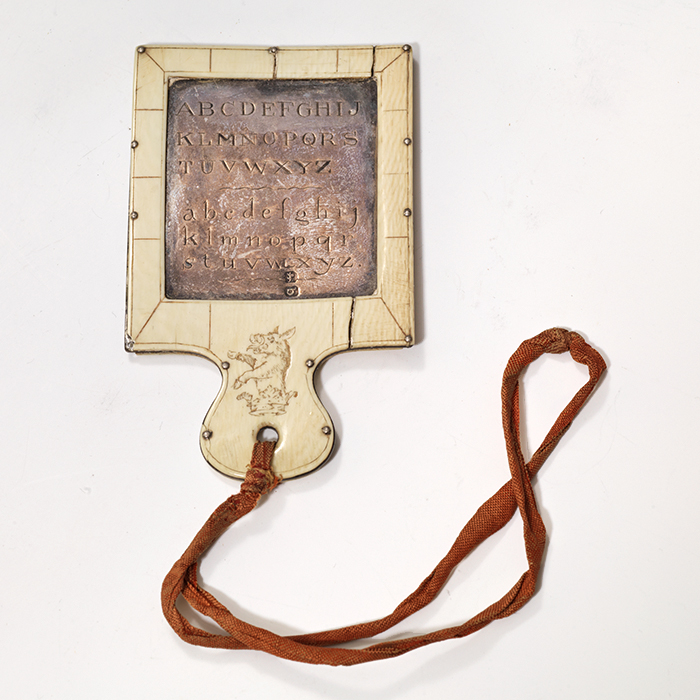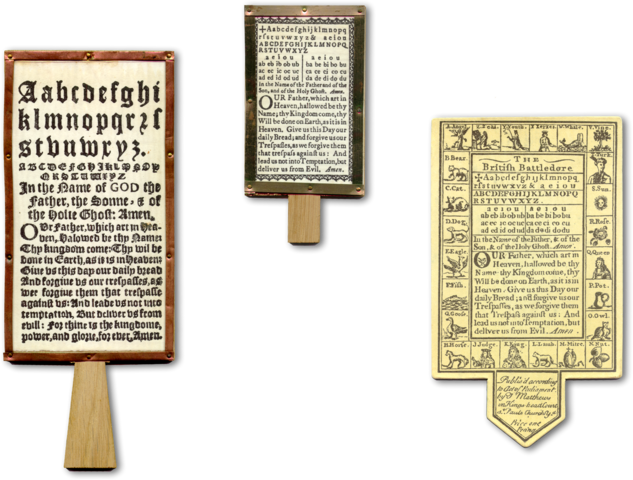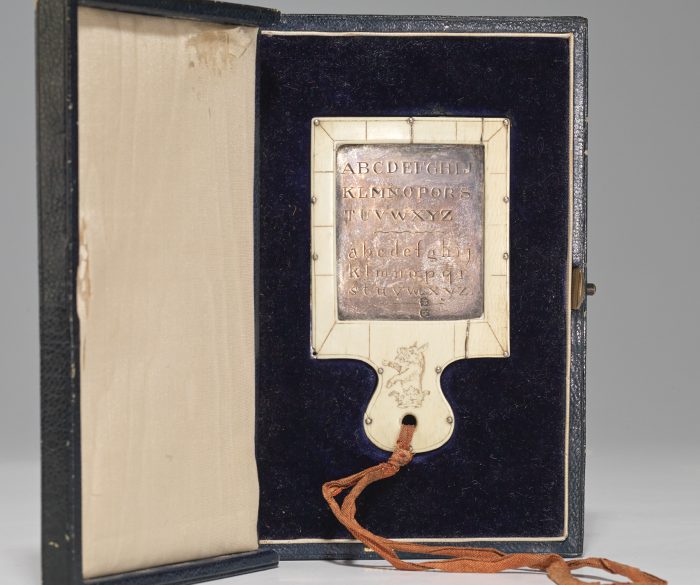
This week, “The Weird and the Wonderful” is taking a look at one of my favorite Bauman items: our ivory and silver hornbook. While most hornbooks were educational devices–functional, utilitarian–this hornbook was created to be special (and especially beautiful).
The hornbook was a teaching staple in England from the 16th to 18th centuries. While continental hornbooks exist, most of those appear to have been used to teach English children.
Usually, hornbooks were made of vellum or paper, horn, and wood. A piece of paper was printed with the alphabet (virtually always), a list of vowels, numbers, the Lord’s Prayer, and/or anything else a child was expected to learn. While the individual papers were far from standard and varied considerably in terms of content, decoration, and printing quality, they most often combined the tools of basic literacy with some type of Christian content. That paper was then mounted on a piece of wood shaped with a handle for holding. Then, a thin sheet of translucent horn was affixed on top of the paper and held in place with brass edging.

The hornbooks were quite small and sturdy, perfect for a child. Children could memorize the contents or practice tracing the letters and numbers with an uninked quill. If the hornbook got dirty, it was easily cleaned. If a child had progressed to further instruction, a new sheet could be added to the verso. And, if a child misbehaved, the hornbook was conveniently shaped like a paddle already (though it’s unclear how often an item this valuable would have been used). When a child outgrew the hornbook altogether, it could easily be passed on to a younger sibling or pupil.
Our hornbook is exceptional, a vast improvement over wood and paper. Here, the alphabet has been engraved on silver–a considerable added expense compared to paper and horn. Likewise, an ivory frame encloses the silver inlay rather than brass strips and nails. The overall quality is far superior to a standard hornbook and could only have been owned by someone with substantial wealth. Interestingly, the verso features a pattern of lines forming squares, which suggests that it was intended to be used as a gameboard. This renders our hornbook even more unusual as the type of education imparted by hornbook was basic, strict, and rarely fun.
However, this proves how innovative the hornbook was as a form. For three centuries (and a bit more if one counts the heavy paper battledore as a type of hornbook), the hornbook was created, altered, and adapted to teach English-speaking children. Times changed and so did the hornbook. Indeed, the hornbook boasts one of the longest lives of any educational tool and modernized versions of it appear again and again in primers, laminated handouts, and workbooks.


